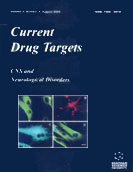Abstract
The 5-HT5 receptor family consists of two members designated as 5-HT5A and5-HT5B. To date the 5-HT5A receptor has been identified in the mouse, rat, and human.The 5-HT5B receptor also is expressed in the mouse and rat, but not in the human wherethe coding sequence is interrupted by stop codons. Both receptors are essentiallylimited in distribution to the central nervous system (CNS), although the 5-HT5A receptor has also been found on neurons and neuronal-like cells of the carotid body.Within the CNS the 5-HT5A receptor shows a relatively broad distribution, while the5-HT5B receptor has a very restricted distribution. The 5-HT5A receptor has beendemonstrated to couple to G proteins, and the primary coupling appears to be throughGi / o to inhibit adenylyl cyclase activity. The 5-HT5 receptors have not been extensivelycharacterized pharmacologically. Both receptors show their highest affinity for LSD, which appears to act as apartial agonist at the 5-HT5A receptor. Amongst agonist-like molecules, 5-CT (5-carboxamidotryptamine) alsohas high affinity and has greater potency and affinity at the 5-HT5A receptor than does 5-HT itself. Both[125I]LSD and [3H]5-CT have been used as radioligands to study the receptors in vitro. Nothing is known aboutthe role of the 5-HT5B receptor in vivo. A mouse line has been developed where the 5-HT5A receptor has beenknocked out and these animals have been shown to have a diminishe d response to LSD-induced increases inlocomotion. The 5-HT5 receptors remain as two of the least studied and understood of the 5-HT receptor subtypes.
Keywords: serotonin, 5-hydroxytyptamine, 5-ht5a, 5-ht5b, receptor, gpcr
 38
38

















